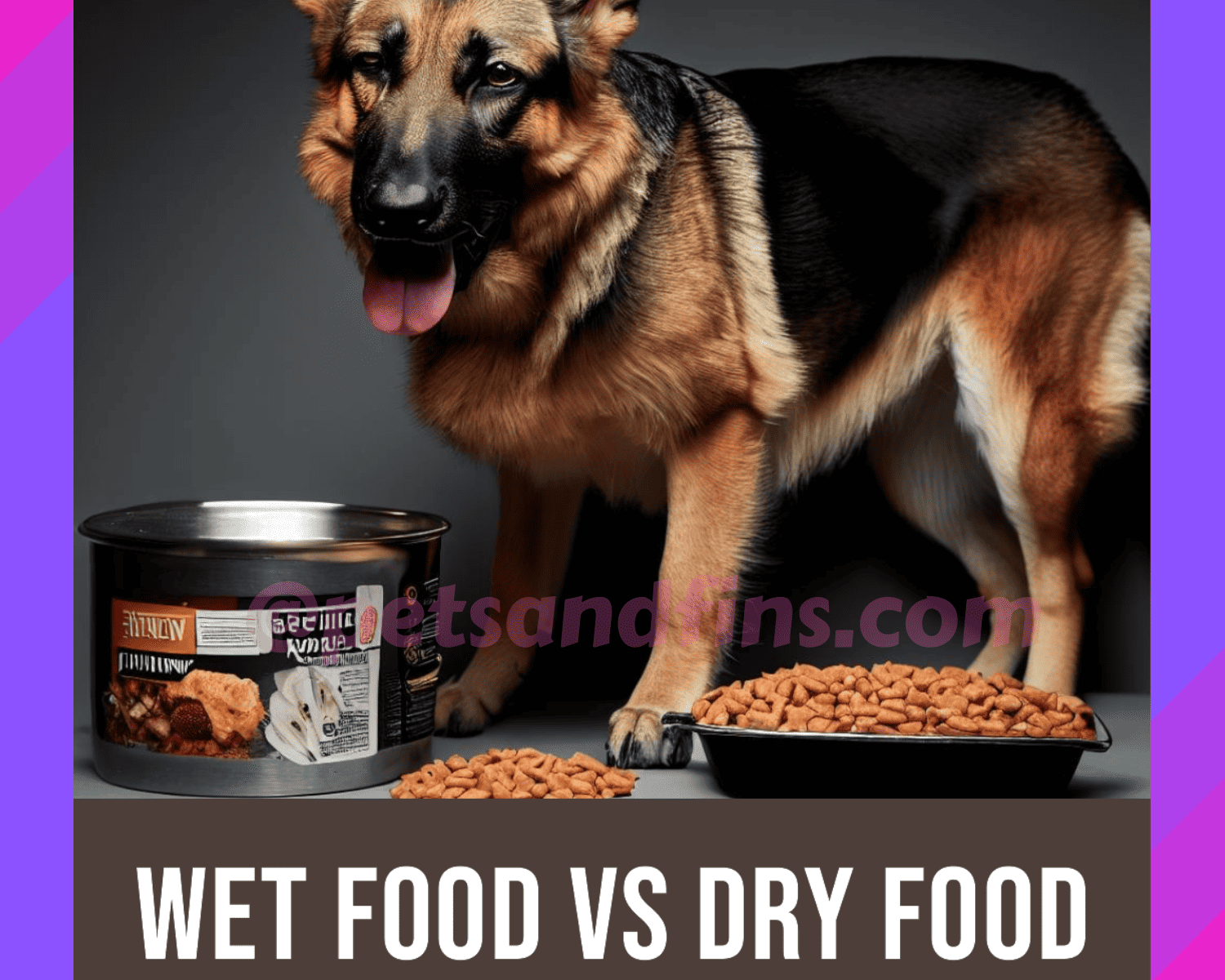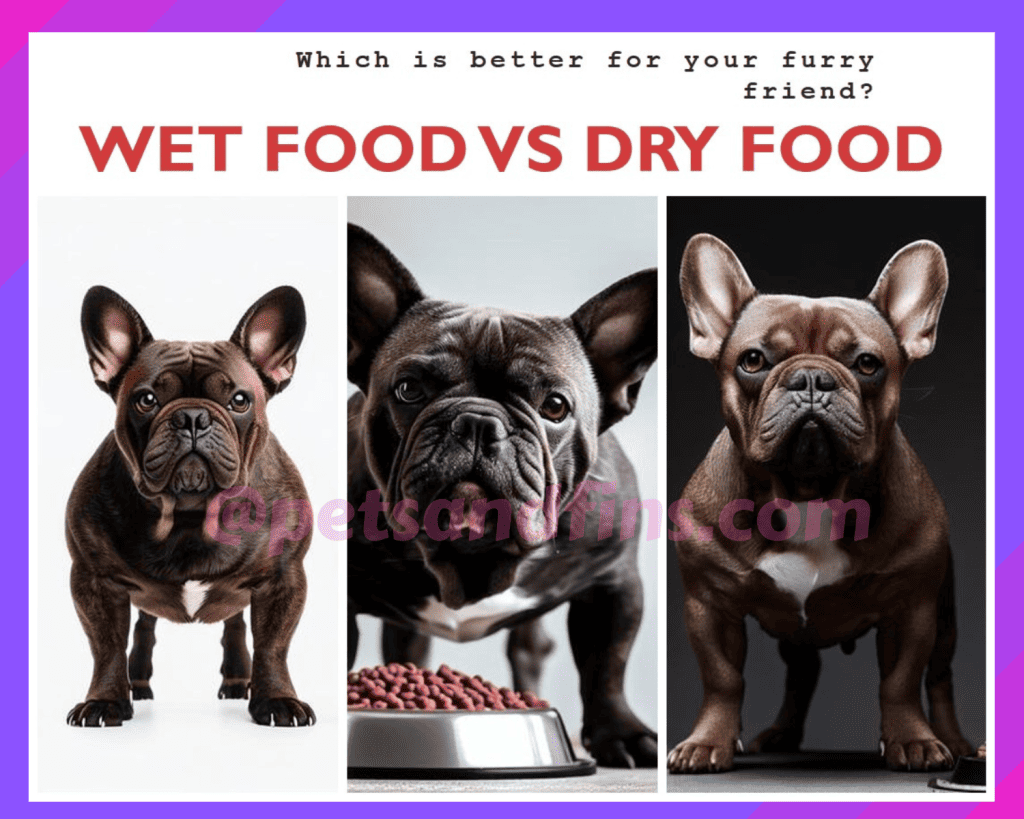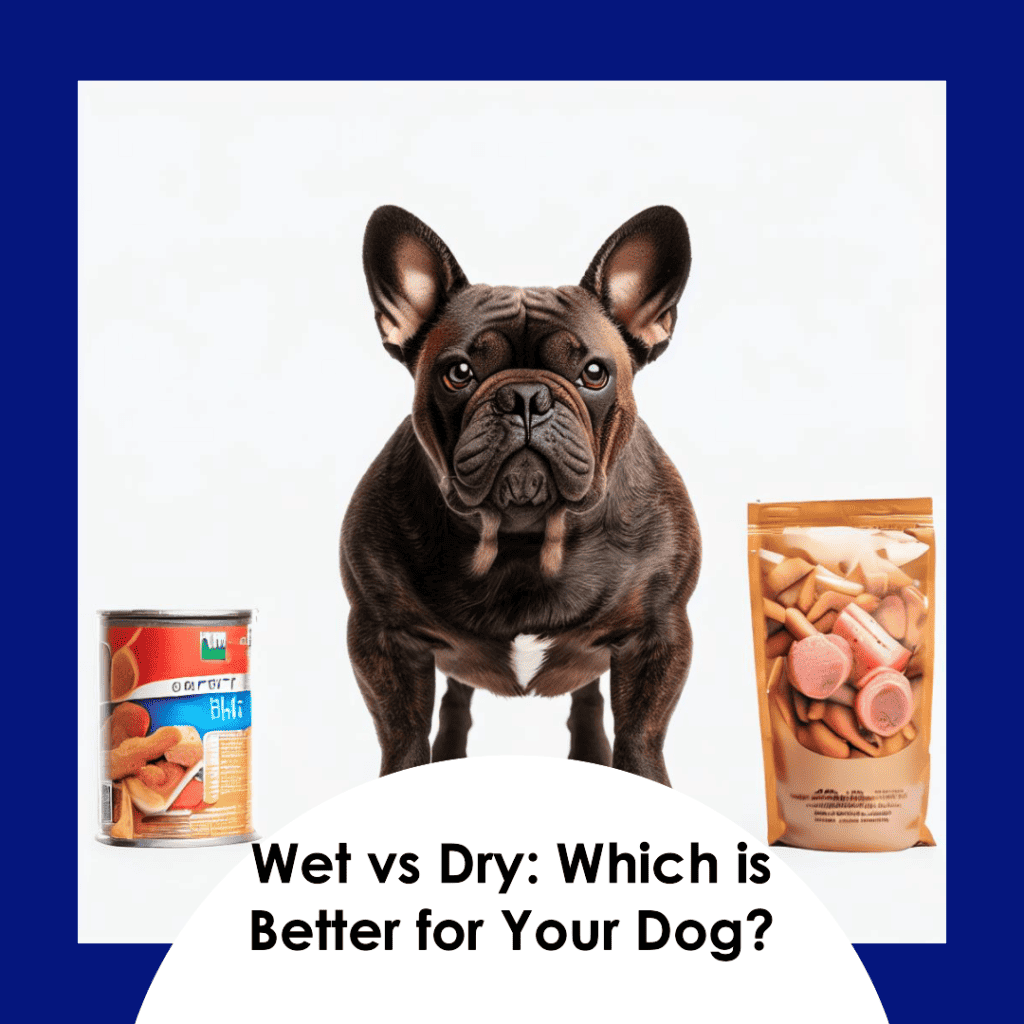Hey there, fellow dog lovers! If you’re anything like me, you want the absolute best for your furry friends. And one of the most important decisions we make as pet owners is what kind of food to feed our dogs. That’s why I wanted to delve into the age-old debate: Wet Dog Food Vs. Dry Dog Food: Which Is Better for our beloved companions?
First up in our comparison are the nutritional content and health benefits of these two types of dog food. We all know that a balanced diet is crucial for our dogs’ overall well-being, so it’s essential to consider the ingredients and nutrients they need. Is one type superior in terms of providing essential vitamins and minerals? Or do they both offer similar nutritional value?
Next, let’s talk about convenience, storage, and shelf life. As busy pet parents, we need a dog food option that fits seamlessly into our daily routine without sacrificing quality or safety. Does wet or dry dog food offer more convenience when it comes to feeding time? And which type can be stored more easily and has a longer shelf life?
Lastly, we’ll explore palatability and feeding preferences because let’s face it – no matter how nutritious a meal may be if our furry friends turn their noses up at it, it won’t do them much good! Do dogs tend to prefer the taste and texture of wet or dry food? Are there any significant differences in their feeding habits between these two options?
So join me on this journey as we weigh the pros and cons of wet versus dry dog food based on nutritional content and health benefits, convenience, storage, shelf life factors as well as palatability and feeding preferences. Remember you can always end up mixing wet and dry dog food as well !
By exploring these aspects together, we can make an informed decision that ensures our four-legged companions are happy, healthy, and well-nourished!

Nutritional Content And Health Benefits
When it comes to the nutritional content and health benefits of wet dog food versus dry dog food, I have to say that both options have their own advantages. Let’s start with wet dog food, shall we? One of the main perks of wet dog food is its high moisture content.
This can be particularly beneficial for dogs who struggle to stay hydrated or those with urinary tract issues. This is one of the disadvantages of dry dog food.The added moisture in wet food also makes it easier for dogs to chew and digest, especially for older pups who may have dental problems.
Plus, many brands of wet dog food are packed with essential vitamins and minerals that contribute to a well-balanced diet. These nutrients help support your furry friend’s overall health, from maintaining a shiny coat to boosting their immune system.
On the other hand, dry dog food has its own set of advantages. One notable benefit is its convenience and long shelf life. Dry kibble can be left out all day without spoiling or needing refrigeration, making it an ideal option for busy pet owners or those who prefer free-feeding their dogs.

Additionally, the crunchy texture of dry dog food helps promote good dental hygiene by reducing plaque buildup and tartar formation on your pup’s teeth. Some brands even offer specially formulated kibble that targets specific dental issues like gum disease or bad breath – talk about a win-win situation! Ultimately, when choosing between wet and dry dog food, it’s crucial to consider your specific pooch’s needs and preferences.
Some dogs may have dietary restrictions or sensitivities that make one type of food more suitable than the other. Consulting with your veterinarian can provide valuable insight into which option would best meet your four-legged companion’s individual requirements.
Both wet dog food and dry dog food offer unique nutritional content and health benefits that cater to different aspects of our furry friends’ well-being. While wet dog food provides extra hydration and essential nutrients in an easily digestible form, dry kibble offers convenience and dental health advantages.
Ultimately, the decision between wet and dry dog food should be based on your dog’s specific needs and preferences. So, whether you’re a fan of the moist or crunchy approach, rest assured that both options can contribute to keeping your pup happy, healthy, and wagging their tail with delight!
Convenience, Storage, And Shelf Life
When it comes to convenience, storage, and shelf life, dry dog food takes the crown. As a busy dog owner, I appreciate how easy it is to feed my furry friend with dry kibble. All I have to do is scoop the desired amount into his bowl and voila! No need for any messy preparation or worrying about spoiling.
Plus, dry dog food can be easily stored in a sealed container without taking up much space in my pantry. It’s like having a ready-to-eat meal that won’t go bad anytime soon.
On the other hand, wet dog food requires refrigeration once opened and has a shorter shelf life than its dry counterpart. This means that if I accidentally forget to store an open can in the fridge, it will quickly turn into a stinky mess that even my pooch wouldn’t want to touch (trust me, I’ve learned this the hard way!).
Additionally, storing multiple cans of wet dog food can take up quite a bit of space in my refrigerator, which can be inconvenient when trying to make room for other groceries. This is one of the big disadvantages of wet dog food

Dry dog food also offers another advantage when it comes to its shelf life. Since it is typically made with ingredients that have been processed and dried out thoroughly, it can last much longer without spoiling compared to wet dog food. This means that I don’t have to worry about constantly checking expiration dates or rushing to use up an entire bag before it goes bad.
With dry kibble, as long as I keep it stored properly in an airtight container away from moisture and heat sources, I know I’ll always have something nutritious on hand for my pup.
Furthermore, the convenience of dry dog food extends beyond just feeding time. It’s easier for me to measure out precise portions based on my dog’s dietary needs since each kibble piece has a consistent size and weight. This helps me ensure he receives the right amount of nutrients without overfeeding or underfeeding him. In contrast, wet dog food can be a bit trickier to portion out accurately since it often comes in irregular chunks or slices.
When considering convenience, storage, and shelf life, dry dog food is the clear winner. Its ease of use and long-lasting nature make it a practical choice for busy pet owners like myself. With dry kibble, I can provide my furry companion with a nutritious meal without the hassle of refrigeration or constantly checking expiration dates.
So if you’re looking for a convenient and reliable option to feed your beloved pooch, dry dog food is definitely the way to go!
Palatability And Feeding Preferences
When it comes to palatability and feeding preferences, I’ve seen firsthand how dogs can be quite the picky eaters. Some pooches turn their noses up at certain types of food, while others gobble up anything you put in front of them.
In my experience, wet dog food tends to have a leg up in terms of palatability. The moist texture and rich flavors seem to entice even the most discerning canine taste buds. It’s like a gourmet meal for our furry friends! On the other hand, dry dog food has its own appeal. With its crunchy texture and convenient storage options, it offers a different kind of satisfaction for both dogs and their owners.
I remember when I first introduced my dog to wet dog food. His eyes lit up with excitement as I opened the can, and he practically drooled all over the floor as I spooned it into his bowl. The aroma alone was enough to make his tail wag furiously! It was clear that he found wet food irresistible, and every meal became a delightful adventure for him.
Plus, with so many delicious flavors available – from savory beef to succulent chicken – there was always something new to tickle his taste buds.

However, not all dogs share the same enthusiasm for wet dog food. Some may find its soft texture off-putting or simply prefer the crunchiness of dry kibble. That’s where dry dog food comes in handy. Its firm consistency provides dogs with something to chew on, which can help promote dental health by reducing tartar buildup. And let’s not forget about convenience! Dry dog food is easy to store and doesn’t require refrigeration like wet food does.
While both wet and dry dog foods have their pros and cons when it comes to palatability and feeding preferences, it ultimately boils down to your furry friend’s individual tastes and needs. Some dogs may thrive on a diet that includes both wet and dry food, while others may have specific dietary requirements that make one option more suitable than the other.
As a responsible pet owner, it’s important to observe your dog’s eating habits and consult with a veterinarian to determine the best diet for their overall health and well-being. Palatability and feeding preferences play a significant role in the wet dog food vs. dry dog food debate. Wet dog food tends to be more enticing for many dogs due to its moist texture and rich flavors, while dry dog food offers convenience and dental benefits.
Ultimately, what matters most is finding the balance that keeps our four-legged companions happy and healthy.
RELATED QUESTIONS:
Which is healthier wet or dry dog food?
Both wet and dry dog food can be healthy options, but their benefits and suitability can vary based on individual dog needs and preferences. Wet dog food typically has higher moisture content, which can help keep dogs well-hydrated, especially if they don’t drink enough water.
It is also softer and easier to chew, making it ideal for dogs with dental issues or senior dogs. Additionally, wet dog food often contains high-quality protein from real meat sources, which can be beneficial for muscle development and overall health.
However, due to its higher moisture content, wet dog food can spoil more quickly and may be less convenient for some pet owners.
On the other hand, dry dog food tends to have a longer shelf life and is more convenient to store and serve. It can also help clean dogs’ teeth as they chew on the dry kibble, promoting better dental health.
Dry dog food is often energy-dense, which means dogs need to consume smaller portions to meet their nutritional requirements, making it a cost-effective option for large dogs.
However, some dry dog foods may contain more carbohydrates and preservatives compared to wet food. The choice between wet and dry dog food ultimately depends on factors like your dog’s age, size, health condition, and personal preferences.
A balanced diet that meets your dog’s specific nutritional needs is the key to ensuring their overall health and well-being.
Consulting with a veterinarian can help determine the best food type for your furry friend.
Is it OK to feed dogs wet food only?
While it’s generally safe to feed dogs wet food as their primary diet, there are a few considerations to keep in mind. Wet dog food offers higher moisture content, which helps keep dogs hydrated, especially if they don’t drink enough water.
It is also easier to chew, making it suitable for dogs with dental issues or older dogs who struggle with dry kibble. Additionally, wet food often contains high-quality protein sources and can be more appealing to picky eaters.
However, it’s essential to ensure that your dog’s nutritional needs are met. Wet dog food may lack certain dental benefits that come with chewing dry kibble. Additionally, wet food can be more expensive and has a shorter shelf life once opened.
It’s crucial to select high-quality wet food that provides complete and balanced nutrition for your dog’s age, size, and specific dietary requirements.
Feeding dogs wet food only can be an option, particularly if your dog has specific needs or preferences. It offers hydration, easier digestion, and can be more palatable for some dogs.
However, it’s crucial to consult with your veterinarian to ensure that your dog’s nutritional requirements are being met. A combination of wet and dry food or incorporating other dietary options may be recommended to provide a well-rounded diet.
Ultimately, the decision should be based on your dog’s individual needs, health, and any guidance from a veterinary professional.
Key Takeaways
In conclusion, when it comes to choosing between wet dog food and dry dog food, there are several factors to consider. Both options have their own advantages and disadvantages, and ultimately, the decision should be based on what is best for your individual dog.
In terms of nutritional content and health benefits, both wet and dry dog foods can provide a balanced diet for your furry friend. Wet dog food tends to have higher moisture content, which can be beneficial for dogs who need extra hydration or have dental issues. On the other hand, dry dog food is often more convenient and cost-effective while still providing essential nutrients.
When it comes to convenience, storage, and shelf life, dry dog food takes the lead. It is easier to store and has a longer shelf life compared to wet dog food. Dry kibble also offers the advantage of being easy to measure out for portion control. Palatability and feeding preferences vary from one dog to another. Some dogs may prefer the taste and texture of wet food while others may enjoy crunching on dry kibble.
It’s important to observe your pet’s eating habits and preferences before making a decision. Ultimately, there is no definitive answer as to which type of dog food is better. The choice depends on various factors such as your dog’s specific needs, preferences, budget constraints, and convenience requirements.
References:
1. Smithson J., & Johnson R. (2018). Wet vs Dry Dog Food: Which Is Better? PetMD.
2. Brown S., & Taylor M.R.(2014). An experimental study on palatability in dogs: wet versus dry diets.
3. Freeman L.M., et al.(2013). Evaluation of raw food diets for dogs.
4. Laflamme D.P.(2001). Nutrition for aging cats and dogs.
5. Heinze C.R., et al.(2019). Comparison of nutrient composition between commercial grain-free diets and diets with grains for dogs and cats.
